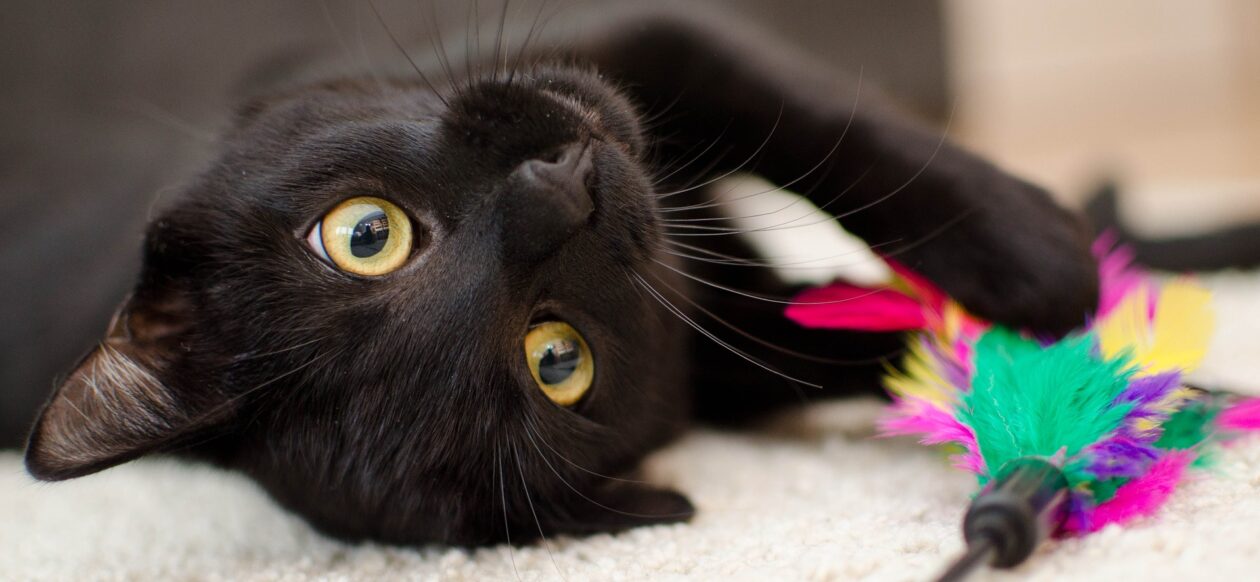Knowing how to check your cat’s vital signs at home is easy to do and can be a helpful way to keep track of your cat’s health. Checking their vitals can also help you identify when your cat is sick or not feeling well, and when it’s time for a visit to the vet. Learn what the normal vital signs are for your cat, and how to step-by-step check your cat’s vital signs at home.
Capillary Refill Time (CRT) or Profusion Rate (Normal is 2 seconds)

Capillary Refill Time or CRT, is done by checking your cat’s gums. This measurement checks the rate of blood flow in the blood vessels called capillaries, of your cat’s gums. By pressing on the gums with your finger, you are forcing the blood out of the capillaries, and when you remove your finger, you’re allowing the blood to refill the capillaries.
So position your cat in a comfortable place on your lap. Pull up their lip and press your finger gently onto their gum until it whitens, then remove your finger and see how quickly the gum returns to a pink color. It should take no more than two seconds for the pink to return. If the gums stay white longer than two seconds, the blood isn’t flowing adequately or normally. This can indicate a heart problem, possible shock due to an accident, or a serious illness. If your cat’s CRT is longer than two seconds, it’s time to see a vet. Taking the CRT measurement is a quick and easy way to find out if your cat has a serious illness.
Secondary Check: While you have your cat’s mouth open, check to make sure their tongue is a healthy pink color, not a blue or grey color, which would indicate a circulation problem or possible serious health concern.
Taking Your Cat’s Temperature
(Normal is 100-102.7 Farenheit) (37.7 – 38.8 C)

Ear and temporal thermometers don’t work well for dogs and cats, so you want to use a digital rectal thermometer to take your cat’s temperature. These are readily available at most pharmacy and drug stores. They take an accurate reading and are easy and quick to use. First, clean your thermometer with rubbing alcohol, wiping it down afterwards, or wash the thermometer in warm soapy water. Apply a lubricant like K-Y® Jelly or a sterile medical lubricant to the end (avoid using Vaseline). Using two people, have one person hold your cat and the other person take their temperature. After lubricating the thermometer, lift your cat’s tail, and gently and slowly insert the thermometer only 1/4-1/2 inch into the rectum. Never push it in, or do this quickly. Turn the thermometer on until it beeps, when it’s completed the reading. Your cat’s temperature should read between 100 and 102.7 F. If their temperature is higher or lower, your cat needs to go to the vet for an exam.
Secondary Check: Check to see if the tail area is healthy—there should be no smell; no discharge coming from the anus; and the anal glands should not protrude at all.
Checking Your Cat’s Heart/Pulse Rate
(Normal is 140 – 220 beats per minute)

The best place to check the pulse rate is on the femoral artery, which is located on the inside of your cat’s thigh near the groin area. With your fingers, put some pressure on the middle part of the leg to feel the pulse. Press down and count for 15 seconds and multiple by 4 to get the total number of heart beats per minute. If you can’t feel the pulse, then check just behind their elbow, over the rib cage where the heart is. Your cat’s normal pulse should read between 140 and 220 beats per minute.
Checking Your Cat’s Respiratory Rate
(Normal is 15 – 40 breaths per minute resting or sleeping)

To check your cat’s breathing rate, listen and watch for one inhalation and exhalation, which equals one breath and count for a 15-second period. Watching their rib cage is an easy place to measure their breaths. Watch their breaths for 15 seconds then multiply by 4 to get their total respiration rate per minute. At rest, your cat should breathe between 10 to 40 breaths per minutes. Cats should never be breathing from their mouth, which is called open-mouth breathing. If they are, this indicates difficulty with breathing and your cat needs to see a vet immediately.
Checking Your Cat’s Eyes

Eyes can be another indicator of health problems and illness. Look at your cat’s eyes, and check that the pupils are an equal size in both eyes. If one is larger or smaller it could indicate a head injury or a possible health problem. Another indicator of health is under the eyelids and the inner and outer eye, which should be white, not pink or red. Gently pull down the inner and outer eyelids a little to check this. In addition, the eyes should be free of any discharge or teariness. Make sure your cat is not scratching or pawing at their eye, which might indicate pain, infection, or something lodged in their eye. Your cats eyes overall should be clear, bright, open and without discharge. Eyes are particularly sensitive and painful for your cat if there is a problem, and problems worsen quickly without veterinary care, so be sure to take your cat to the vet if any of these concerns are present.
Since cats are very good at masking illness and hiding their symptoms when they’re not feeling well, being able to check your cat’s vital signs on a regular basis is a great way to maintain their health and know when something is wrong. Make sure to maintain regular annual physical exams with your veterinarian once a year, or twice a year with older cats.


